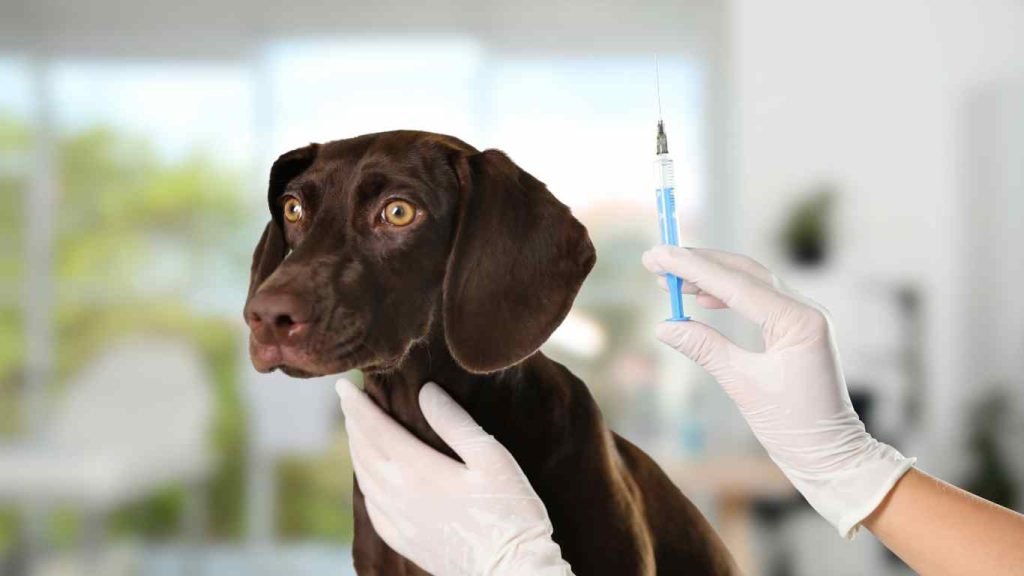Every year, an estimated 100,000 pets in the United States alone are exposed to potentially toxic plants, particularly during the springtime bloom. As gardens across the country come alive with the vibrant hues of irises, a pressing question arises for pet owners: are iris poisonous to dogs?
Unfortunately, the answer is unsettling. Yes, irises do pose a real threat to our canine companions. Belonging to the Iridaceae family, these beautiful flowers contain toxic compounds that can lead to a range of unpleasant symptoms if ingested, including drooling, vomiting, and diarrhea—warnings issued by the Pet Poison Helpline. Safeguarding your dog’s well-being around irises requires awareness and proactive measures from every responsible pet parent.
Understanding the risks associated with iris toxicity in dogs is not just about avoiding an unpleasant situation; it’s a serious health imperative. Whether you’re a new dog owner or a seasoned pet caretaker, being informed about the potential dangers that irises present can mean the difference between a vibrant pet and a preventable trip to the vet. Let’s delve into what makes these plants a hazard and how you can ensure your beloved pet steers clear of harm.
Are Irises Poisonous to Dogs:

Understanding Iris Toxicity in Dogs
Welcome to the guide that shines a light on the risks of iris plants for dogs, equipping you with the knowledge needed to protect your furry friends. When the flowers bloom, it’s vital to consider not just their beauty but also the potential iris poisoning risks for dogs that come with these botanical beauties. Read on to learn how to identify dangerous plant species, understand the toxic elements in irises, and the factors that can influence the severity of a reaction in your dog.
Identifying Iris Plants in Your Garden
With their striking colors and elegant appearance, iris plants can be tempting additions to your garden. Key identifiers include long, pointed leaves, and a variety of colors such as blue, purple, and yellow. Here’s a visual guide:
The Toxic Compounds Found in Irises
Irises contain toxins primarily concentrated in the bulb or rhizome. These compounds can cause skin irritation and if ingested, lead to gastrointestinal distress. Awareness of these dangers can help dog owners maintain a safe environment for their pets.

How Toxicity Levels Vary by Dog Size and Iris Species
The size of your dog and the particular species of iris in your garden will play significant roles in how your pet may react to these plants. Here’s a handy table to understand the iris poisoning risks for dogs based on these factors.
| Dog Size | Species of Iris | Risk Level |
|---|---|---|
| Small breed | Bearded Iris | High |
| Medium breed | Douglas’s Flag | Medium |
| Large breed | Yellow Water Iris | Low |
Remember, the dangers of irises for dogs should not be underestimated. Even if the iris species is deemed to have a lower risk for larger dogs, it is best to err on the side of caution and prevent access to these plants. Stay informed and stay proactive to ensure your dog’s safety.
Are Iris Poisonous to Dogs: Breaking Down the Risks
When it comes to the safety of your furry companions, understanding the risks associated with garden plants is crucial. It’s a common question many pet owners ask: are iris poisonous to dogs? The answer, unfortunately, is yes. Irises contain various compounds that can lead to iris toxicity, primarily if a dog ingests any part of the plant. As a responsible pet owner, knowing the risks and practicing iris toxicity prevention for dogs can help keep your canine friends safe from harm.
The potential dangers of irises to dogs span oral to gastrointestinal complications. If your dog chews on or ingests an iris, they may exhibit symptoms such as:
- Increased drooling
- Vomiting
- Diarrhea
- Lethargy or decreased energy levels
These symptoms, while distressing, signal the need for immediate action towards iris toxicity prevention. To aid in the understanding of what pet owners might encounter, here’s a breakdown of the risks in the form of a comprehensive table:
| Part of Iris Plant | Potential Risk | Symptom Checklist | Prevention Tips |
|---|---|---|---|
| Flowers, Leaves, Stems | Mild to Moderate Irritants | Drooling, Vomiting | Restrict access to gardens |
| Rhizomes (Bulbs) | Higher Concentration of Toxins | Vomiting, Diarrhea | Plant non-toxic alternatives |
| Entire Plant | Oral and Gastrointestinal Irritation | Decreased Energy, Loss of Appetite | Educate household on risks |
By staying vigilant and actively working to prevent intake of dangerous plants, you’re not only protecting your dogs from toxicity but also nurturing a safer environment for them to thrive in. Always remember, the best defense against iris toxicity in dogs is prevention and education. Keep your garden pet-friendly, and your dogs will thank you for it.

Symptoms of Iris Poisoning in Dogs
As a pet owner, it is essential to recognize the symptoms of iris poisoning in dogs to ensure the health and safety of your furry friend. The vibrant iris plants can pose a hidden danger, so being informed about what symptoms to look for can be the key to prompt and effective treatment.
Recognizing the Signs of Oral Irritation
One of the first and most noticeable signs of poisoning from iris plants in dogs is oral irritation. If you notice your dog displaying behaviors such as excessive drooling, difficulty swallowing, or an aversion to eating, these could be signals that they have chewed on or ingested part of an iris. Pay close attention to your dog’s oral health and seek veterinary help if you suspect any abnormal signs.
Gastrointestinal Symptoms to Watch For
- Vomiting
- Diarrhea
- Abdominal pain
- Lack of appetite

These gastrointestinal issues can indicate that toxins from iris plants have entered your dog’s system. Quick identification of these symptoms is crucial, as they can lead to dehydration and more severe health problems if not addressed.
Behavioral Changes Indicating Poisoning
Aside from physical symptoms, changes in your dog’s behavior can also be a strong indicator of iris toxicity. If your normally energetic and playful companion suddenly seems lethargic or depressed, this could be a response to poisoning. In such cases, your dog may also exhibit signs of weakness or disorientation, which warrant immediate attention.
For the safety of your dogs around iris plants and dogs, recognizing the warning signs can make a vital difference. If you suspect your dog has ingested iris plant material, do not hesitate to contact your veterinarian for advice and possible treatment. Early detection and intervention can help ensure a positive outcome for your pet.
First Aid and Immediate Care for Suspected Iris Poisoning
If you suspect your furry friend has ingested part of an iris plant, it’s critical to act swiftly to initiate first aid for dogs facing potential poisoning. The steps you take in the immediate aftermath can significantly impact your dog’s wellbeing. As a responsible pet owner, familiarize yourself with the initial measures for iris poisoning treatment and maintain dog safety around irises.

Steps to Take If Your Dog Ingests Irises
- Begin by carefully removing any pieces of plant from your dog’s mouth, if it is safe to do so without being bitten.
- Offer your dog clean water. This helps to dilute any toxic substances ingested and soothe oral irritation.
- Observe your dog closely, looking for symptoms such as vomiting, diarrhea, excessive drooling, or apparent pain.
- Prevent further access to iris plants, ensuring your pet’s environment is safe and free from additional risks.
When to Seek Veterinary Attention
Veterinary care is imperative when dealing with potential iris poisoning. If your dog shows persistent symptoms or if you’re unsure about the amount ingested, it’s time to seek professional help. When in doubt, err on the side of caution and contact your veterinarian. If you can, take a sample of the ingested iris to the vet to aid in quick identification and treatment.
| Symptom | At-Home First Aid | Veterinary Attention Needed |
|---|---|---|
| Mild Drooling | Provide water, monitor | If persists or worsens |
| Vomiting | Remove food, offer water | Yes, especially if repetitive |
| Diarrhea | Ensure hydration | If severe or blood present |
| Lethargy | Comfort, limit stress | Yes, as it can indicate severe poisoning |
Remember, iris poisoning in dogs can escalate quickly, and your response time is paramount. By practicing prompt and informed first aid, you’re not just managing symptoms, but also safeguarding your dog’s health against potential complications from iris ingestion.
[content-egg module=Amazon products=”us-B0B41MYSGP” template=item_simple]Diagnosis and Treatment Procedures for Iris Toxicity
If your furry friend has shown symptoms of iris poisoning, a trip to the vet is the next critical step. Understanding the procedures for diagnosing and treating iris toxicity in dogs can help you be prepared for what’s to come and ensure your pet receives the best care possible.
The cornerstone of diagnosing iris toxicity in dogs typically involves a detailed physical examination. Your vet may want to perform several diagnostics to determine the severity of the toxicity and the best treatment plan.
| Diagnostic Test | Purpose | Possible Findings |
|---|---|---|
| Fecal Analysis | To check for parts of the iris plant or its toxins | Presence of irritating substances or undigested plant material |
| Urinalysis | To assess kidney function and check for blood in the urine | Signs of kidney compromise or irritation in the urinary system |
| Blood Workup | To evaluate internal organ function and hydration levels | Changes in liver enzymes, electrolyte imbalances, dehydration |
| PCV (Packed Cell Volume) | To determine red blood cell levels | Anemia or changes indicating inflammatory processes |
Upon confirming a diagnosis of iris poisoning, treatment strategies are formulated. Initial treatment may include inducing vomiting or administering activated charcoal to prevent further absorption of the toxins. Supportive care, such as IV fluids and anti-emetics, can be given to address dehydration and nausea.
Monitoring and adjusting treatment according to your dog’s progress and developing symptoms of iris poisoning is imperative. Recovery times will vary; however, with prompt treatment, many dogs bounce back well. Always communicate closely with your vet throughout this process.

Preventing Iris Poisoning: Keeping Your Dog Safe
As a dog owner, ensuring the well-being of your furry friend is paramount. One often-overlooked danger lurks in gardens and flower beds: the beautiful, yet potentially harmful, iris. Let’s explore the steps you can take for iris toxicity prevention for dogs and reinforce dog safety around irises.
Safe Alternatives to Irises for Dog-Friendly Gardens
When cultivating a garden paradise, consider non-toxic flora that won’t endanger your pets. The ASPCA Poison Control Center recommends several safe alternatives that can add color and variety without posing a risk to your beloved companions. Here are a few dog-friendly choices:
- Snapdragons (Antirrhinum majus) – Charming and vibrant, these pose no threat to your pet’s health.
- Roses (Rosa species) – A classic and elegant choice, roses are safe for dogs, although watch out for thorns.
- Sunflowers (Helianthus annuus) – With their towering height and cheerful faces, sunflowers make a dog-safe statement in any garden.
Effective Methods for Iris Toxicity Prevention
Education is your first line of defense in preventing iris toxicity. Understanding which parts of the plant are harmful and learning to recognize symptoms can make all the difference. Moreover, here are additional precautionary steps to ensure your dog’s safety:
- Mind the Access: Limit your dog’s unsupervised access to areas with irises or other potentially dangerous plants.
- Continuous Supervision: When outdoors, keep a watchful eye on your pet to prevent any curious nibbling.
- Garden Smart: Design your garden with pet safety in mind, choosing plants that pose no risk to your dog’s health.
By incorporating these measures and remaining vigilant, you can enjoy the beauty of nature alongside your canine companion with peace of mind, fostering a safe environment for all.

The Role of Professional Care: Vets and the Poison Helpline
When your furry friend has an unfortunate encounter with irises, professional veterinary care, combined with assistance from the Pet Poison Helpline, becomes the backbone of their recovery journey. Understanding the expertise that these resources offer will prepare you for the crucial steps ahead.
What to Expect at the Veterinarian’s Office
Upon arrival, expect the veterinary team to act swiftly to assess your dog’s condition. The diagnosis of iris toxicity in dogs typically includes a series of diagnostic tests. These may entail blood work to evaluate organ function and electrolyte status, along with an examination of any plant matter found in your dog’s mouth or vomit. Your vet may administer treatments such as intravenous fluids to combat dehydration and medications to alleviate symptoms like nausea or pain.
How the Pet Poison Helpline Can Assist
In tandem with your vet’s expert care, the Pet Poison Helpline offers critical support during these emergencies. Even before you reach the vet, a call to the helpline can provide invaluable instructions to stabilize your dog and prevent the condition from worsening. Their seasoned toxicology experts can also work directly with your veterinarian to develop a tailored and effective treatment plan.
Remember, you don’t have to navigate the stressful situation alone. These professionals are your allies, ensuring that you’re armed with the knowledge and support necessary for your dog’s optimum recovery.
Long-Term Outlook After Iris Ingestion
The journey of recovery post-iris toxicity in dogs may extend beyond the immediate relief from the initial symptoms. It’s essential to understand that the long-term effects of iris poisoning in dogs vary and hinge on factors like rapid response following ingestion and the quantity of iris plant material your pet consumed. Though identified by the Pet Poison Helpline as having a mild level of toxicity, you can never be too careful; watching your dog recuperate and return to its joyful, energetic self is both rewarding and critical.
If you’re pondering the potential impact on your furry companion’s health in the long run, it’s reassuring to know that with your vet’s guidance and prompt treatment, full recovery is the usual prognosis. However, maintaining vigilance and implementing preventative strategies will go a long way in ensuring that your pet won’t need to face such a challenge again.

You might be curious about what kind of behaviors or signs to monitor in your dog after treatment for iris ingestion. Here’s a concise outline to help you stay informed and proactive:
- Observe for any residual gastrointestinal signs like loss of appetite, which could indicate ongoing irritation.
- Ensure your dog stays hydrated and watch for any urinary irregularities, as dehydration can occur post-poisoning.
- Keep a close eye on their energy levels and note any changes in their usual behavior or demeanor.
As you remain watchful for these signs, also consider the value of a dog-proof garden. Opting for non-toxic plant varieties and securing boundaries can prevent a repeat scenario. The detailed table below will guide you through selecting pet-friendly garden additions:
| Botanical Name | Common Name | Notes |
|---|---|---|
| Rosmarinus officinalis | Rosemary | Aromatic herb safe for pets; also deters some pests. |
| Thymus vulgaris | Thyme | Hardy, pet-friendly, and requires minimal care. |
| Origanum vulgare | Oregano | Non-toxic to dogs, but use sparingly in their diet. |
| Mentha spicata | Spearmint | Safe for dogs and can freshen their breath. |
Whether it’s replacing your irises with safer plants or redesigning your garden layout, it pays off to foster an environment where your dog can explore without posing a risk to their health. In the end, the time spent nurturing your pet’s well-being is priceless, ensuring that the effects of that one iris-instigated incident remain in the past.

Iris Plants and Dogs: Common Myths Debunked
When it comes to dog safety around irises, there’s a plethora of information and, unfortunately, misinformation. It’s time to separate fact from fiction and set the record straight on how iris plants and dogs can coexist without harm.
Myth vs. Fact: Common Misconceptions About Irises and Dogs
One widespread myth suggests that irises are non-toxic due to their popularity in home gardens. The truth is, however, that all parts of the iris, including leaves, stem, and even the petals, contain substances that can be harmful to your furry friends. Another fallacy is that only certain species of iris are dangerous. In reality, while varying levels of toxicity exist among species, all irises have the potential to cause distress to dogs if ingested.
Real Stories of Dogs and Iris Poisoning: Lessons Learned
Sharing accounts of dogs who have suffered from the effects of iris poisoning brings this issue out of the realm of theory and into stark reality. These stories offer critical insights for pet owners to understand the importance of vigilance and preventive strategies to ensure dog safety around irises. By recognizing the signs of potential poisoning early, pet owners can take swift actions to protect their canine companions.
- Familiarize yourself with the appearance of irises in your garden to avoid accidental exposure.
- Observe your dog’s behavior closely when they are near garden areas that contain irises.
- Consider non-toxic alternatives for a pet-friendly garden space.
By debunking these myths and taking proactive measures, you can enjoy the beauty of irises in your garden while keeping your dogs safe and happy.

Join Our GeoZoo Family
Subscribe to our Newsletter
Final Remarks
As we reach the end of this insightful journey, it’s imperative to reiterate that while irises add a touch of elegance to our gardens and homes, the risk they pose to our canine companions cannot be overlooked. It’s essential to keep in mind, are iris poisonous to dogs? The answer is a definite yes. As dog owners, your proactive steps in recognizing the symptoms of iris poisoning and being prepared with immediate care techniques are paramount.
Maintaining a pet-friendly environment goes a long way in mitigating the iris poisoning risks for dogs. Educating yourself about the potential dangers, such as those posed by the beautiful but deceiving iris, equips you with the knowledge to prevent your furry friends from harm. Adopting prevention strategies, like planting dog-safe flora and supervising your pets around gardens, are straightforward yet effective methods to shield them from toxic plants.
Remember, your awareness and swift action can make all the difference in ensuring the well-being of your loyal companions. Keep these guidelines in mind and create a safe haven for your pets, where they can play and explore without the shadow of toxicity looming over. By doing so, not only do you contribute to the health and happiness of your dogs but also to the peace of mind that comes with responsible pet ownership.
FAQ
Are irises poisonous to dogs?
Yes, irises are poisonous to dogs. All parts of the plant, especially the bulb, contain compounds that can cause toxicity if ingested by your pet. Symptoms of iris poisoning include drooling, vomiting, diarrhea, and lethargy.
How can I identify iris plants in my garden?
Irises have distinct fan-shaped leaves and colorful flowers. They can be found in various species such as the bearded iris, Douglas’s flag, and yellow water iris. If you are unsure, consult a plant identification guide or reach out to a local gardening expert.
What parts of the iris are toxic to dogs?
All parts of the iris plant are potentially harmful, with the highest concentration of toxic compounds typically found in the bulb or rhizome. Keep these parts out of your dog’s reach to prevent iris toxicity.
What should I do if I suspect my dog has ingested iris?
Remove any plant remnants from your dog’s mouth and offer fresh water. Monitor your pet closely for any signs of distress, and contact your veterinarian immediately if symptoms persist. It can be helpful to bring a part of the plant to the vet for identification.
How are iris toxicity levels affected by dog size and iris species?
The toxicity level and reaction severity can vary depending on your dog’s size, overall health, and the specific iris species ingested. Smaller dogs might experience more intense symptoms due to their size. Consult with a professional for species-specific information.
What are some safe alternatives to irises in a dog-friendly garden?
Consider planting non-toxic options like snapdragons, petunias, or asters in your dog-friendly garden. You can reference resources from organizations like the ASPCA Poison Control Center for a comprehensive list of safe plants.
What are the gastrointestinal symptoms of iris poisoning to watch for in dogs?
Gastrointestinal symptoms include vomiting, diarrhea, abdominal pain, and possible loss of appetite. If you observe these in your dog after potential exposure to irises, contact your veterinarian.
Can a dog recover after ingesting part of an iris plant?
Yes, with prompt and proper care, most dogs can recover fully from iris poisoning. However, early detection and treatment are crucial to ensure the best outcome for your furry friend.
How can I prevent my dog from iris toxicity?
Implement iris toxicity prevention by keeping iris plants out of reach or eliminating them from your garden. Educate yourself on plant toxicity, supervise your dog’s outdoor activities, and consider enclosing your garden with fencing to prevent access.
How can the Pet Poison Helpline assist in cases of iris ingestion?
The Pet Poison Helpline can provide immediate advice on what to do if your dog has ingested part of an iris plant. They will guide you through first aid steps and may advise you on when to seek veterinary care.
Are only the bulbs of irises poisonous to dogs?
No, that is a misconception. While the bulb or rhizome contains a higher concentration of toxic compounds, all parts of the iris plant can be dangerous and cause symptoms of poisoning if ingested by dogs.
What should I expect at the veterinarian’s office after iris ingestion?
Your veterinarian will likely perform a physical examination and could request diagnostic tests such as blood work and urinalysis to assess your dog’s condition. Based on the findings, treatments may include IV fluids, medications, or activated charcoal.



